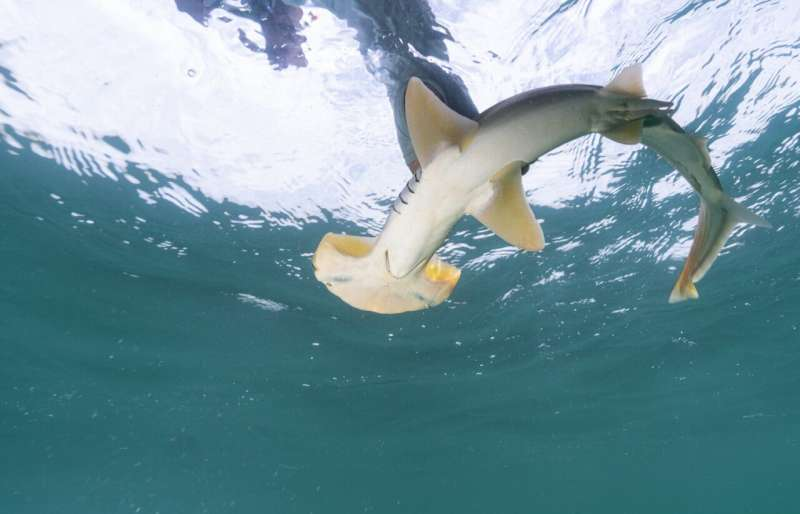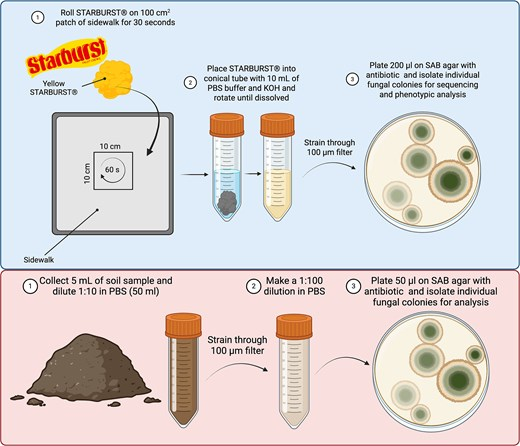New Environmental DNA Test Offers Hope for Critically Endangered Hammerhead Sharks

A groundbreaking new environmental DNA (eDNA) test developed by marine biologist Diego Cardeñosa at Florida International University (FIU) could revolutionize how scientists find and protect some of the world’s rarest hammerhead sharks—without ever catching or even seeing them.
This innovative method identifies tiny fragments of genetic material left behind in seawater, acting like a biological fingerprint that tells researchers where these elusive creatures have been. The study, recently published in Frontiers in Marine Science, focuses on three small-bodied and highly endangered hammerhead species: the scalloped bonnethead (Sphyrna corona), scoophead (Sphyrna media), and Pacific bonnethead (Sphyrna vespertina).
Detecting Sharks Without Catching Them
Traditional shark monitoring methods depend heavily on sightings, fishing captures, or tagging—approaches that are difficult, invasive, and often unreliable for species that are already rare. Cardeñosa’s eDNA approach changes that completely. By simply collecting water samples, scientists can now detect whether a shark species has been present in the area based on traces of DNA shed through skin, mucus, or waste.
In laboratory trials, Cardeñosa’s team created species-specific tests targeting mitochondrial gene regions such as ND2 and the Control Region. These regions contain unique DNA sequences that act as precise identifiers for each species. The assays proved to be highly efficient and accurate, showing strong sensitivity (with R² values above 0.99) and no cross-reactions with DNA from other species.
Once validated in the lab, the method was field-tested in Uramba/Bahía Málaga National Natural Park on Colombia’s Pacific coast—one of the few remaining sanctuaries where these small hammerheads are still known to exist. Using the new eDNA test, scientists successfully detected all three species in the park’s waters, marking the first-ever confirmation of their presence through environmental DNA.
Why These Sharks Are So Hard to Find
Small-bodied hammerhead species like the scalloped bonnethead and scoophead have been devastated by overfishing, particularly in coastal areas where fishing regulations are weak or poorly enforced. Many local fisheries unintentionally capture them as bycatch. Because these sharks live in shallow, remote, and often murky coastal habitats, researchers have found it nearly impossible to study them using traditional tools.
For example, the scalloped bonnethead was last seen in Mexico in 1994, while the scoophead hasn’t been recorded there since 2007. In Honduras, one of these species was only rediscovered recently after decades of absence. These alarming gaps in observation highlight how close these sharks are to vanishing altogether.
Cardeñosa’s new eDNA test offers a non-invasive lifeline. By scanning different coastal areas from Mexico to northern Peru, researchers can identify hotspots of remaining populations and focus conservation efforts where they matter most.
A Major Step Forward for Shark Conservation
The ability to pinpoint where these hammerheads still live could reshape how conservationists protect them. The data collected from eDNA can help determine priority habitats, such as breeding or nursery zones, that need stricter protection.
Uramba/Bahía Málaga National Natural Park has emerged as one such crucial refuge. There, hammerheads can still be found in relatively healthy numbers compared to other parts of their range. Cardeñosa’s findings suggest that this park may represent one of the last surviving safe havens for these species in the eastern Pacific.
The technique also allows scientists to archive DNA data for future use. Once the genetic material is extracted from a water sample, it can be stored in a lab indefinitely. That means years later, researchers could reanalyze the same sample to check for other species that might have been present in that habitat, offering a long-term record of biodiversity in marine environments.
What Environmental DNA Means for Marine Research
Environmental DNA has become one of the most promising tools in modern conservation biology. It’s already being used to track frogs, whales, and even invasive fish species. The principle is simple: every organism leaves traces of its DNA in the environment, and scientists can capture that genetic residue to determine presence or absence.
For marine research, eDNA has a few major advantages:
- No disturbance to animals—no need for nets, hooks, or direct contact.
- Wider coverage—water samples can be taken across vast regions in relatively little time.
- Greater sensitivity—species can be detected even when they are extremely rare or elusive.
However, eDNA is not perfect. DNA in water can travel with currents, so a detection might not always mean the animal is still nearby. It also degrades over time, especially under sunlight and warm temperatures, which limits how far back the signal can represent actual presence. Despite these challenges, it remains one of the most efficient and humane monitoring tools ever developed.
Why Small Hammerheads Deserve Attention
Hammerhead sharks as a group are known for their distinctively shaped heads—called cephalofoils—which enhance sensory perception and maneuverability. While larger hammerheads like the great hammerhead (Sphyrna mokarran) often attract attention due to their impressive size, smaller coastal species such as the scalloped bonnethead or scoophead have largely been overlooked by conservation programs.
Yet these smaller species are evolutionarily unique. They represent some of the most recently evolved shark lineages, meaning their extinction would erase an entire branch of the shark family tree. Losing them wouldn’t just affect marine ecosystems—it would mean losing a piece of our planet’s evolutionary history.
Additionally, small hammerheads play essential roles in maintaining healthy coastal ecosystems. As mid-level predators, they help regulate fish populations, keeping the food web balanced. Their disappearance could trigger cascading effects that harm coral reefs and seagrass beds.
From Discovery to Action
Detecting where endangered sharks live is just the first step. Real conservation success depends on strong local and international protection efforts. That includes:
- Enforcing sustainable fishing practices and reducing bycatch.
- Expanding marine protected areas in key habitats.
- Encouraging community involvement in coastal conservation.
- Supporting long-term research funding to continue monitoring populations.
Cardeñosa emphasizes that the urgency is clear: these species are among the most endangered coastal sharks in the world, and time is running out to save them. His hope is that this new technology will not only help identify where these sharks survive but also inspire a broader sense of responsibility to protect them before they disappear entirely.
The Bigger Picture
The success of this eDNA test marks an exciting leap forward for marine conservation technology. It proves that with creativity and modern genetic tools, researchers can overcome many of the barriers that once made it impossible to study or protect rare marine life.
More importantly, this study underscores how scientific innovation can serve as a powerful ally in the fight against extinction. If applied widely, environmental DNA testing could help protect countless other endangered ocean species—from rays and sawfish to sea turtles and seahorses—by revealing where they still survive before it’s too late.
Conservationists now have a way to listen to the ocean’s “genetic whispers,” giving voice to species we can no longer see. The question is whether humanity will act fast enough to ensure that those whispers don’t fade away forever.





